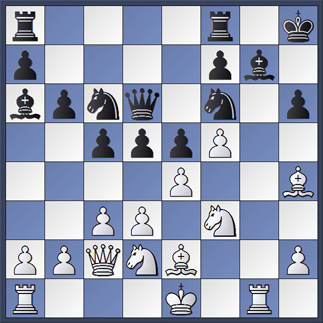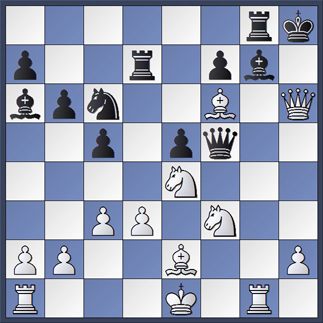I arrived in Oslo Monday afternoon, so I have now been here four full days. My first impression was that it looked absolutely like something out of a fairy tale. Oslo has been getting a lot of snow this winter — in fact, it has snowed every day since I arrived. The snow piles up on the branches of the pine trees, of which there are very many, and so it looks just like a painting of a Nordic winter scene. I am half expecting Santa’s elves to pop out from behind the trees any moment. (Actually, I guess the more traditional creature in Norse folklore is a troll.)
The hotel I am staying at is right on a fjord! The fjord is frozen, of course, close to shore, but farther out it is still unfrozen and I saw ships traveling on it.
The hotel is also right across from the new Telenor Arena, which opened this week with … a concert by AC/DC. I didn’t know anything about this; I just went out for dinner on Wednesday night and fell in with an enormous crowd of pedestrians heading toward the arena. Most of the people going to the concert were young and rowdy, so I was wondering what the event was. I was amazed when the hotel receptionist told me it was an AC/DC concert! When I was the age of those people, I was listening to AC/DC too. My ex-wife was a big fan, and we had a copy of their “Back in Black” album. I wasn’t such a fan, although I did warm up to them just a little bit. This was in 1981. I never would have dreamed that they would be attracting huge audiences … in Norway, at least … 28 years later! I’m also surprised that for the very first event in the new arena they didn’t pick something a little more Scandinavian. If you’re going to go retro, why not Abba? But I think that the Norwegians don’t get along that well with the Swedes, so maybe Abba isn’t so popular here.
Okay, well, I know that most of you aren’t that interested in elves, trolls, or AC/DC. I have not yet found the time to go looking for the Oslo chess club, but I did play a little bit of speed chess a couple days ago against the best player at the research lab that I am visiting for two weeks (a government-owned nonprofit company called Simula AS). He is a Brazilian post-doc named Bernardo, and I don’t know what his strength is or if he has a rating. I am guessing that he might be about 1700 strength, because I beat him 2 out of 3 and the one I lost was only because I sacrificed a piece unsoundly just for the fun of it.
I was really nervous, though, playing him. I always feel that way when I play chess in a new place where I don’t know anyone and don’t know how strong anyone is. However, we had one fairly decent game (at least for 5-minute chess), and since this is a chess blog I will show it to you.
1. e4 c5 2. f4 d6 3. d3 Nc6 4. c3 g6 5. Be3 Bg7 6. Nd2 Nf6 7. Be2 O-O 8. g4 …
This is a position I see often. Most Black players, if they avoid an early … d5, will end up in this position by just playing the most obvious moves. A few people, especially in “real,” non-blitz games, will avoid castling on move 7 because they see 8. g4 coming. According to Fritz there is no need for Black to fear this, but to most humans it does look a bit intimidating.
There are two good plans for Black here. One, favored by the computer, is to play 8. … b5, with dueling attacks on the two flanks. The other, which humans are more likely to choose, is to play … b6, … e6 and … d5. I think that either of these plans are okay. Even so, I like playing this position as White because my opponents won’t know it and I will.
In this game, Bernardo plays what I think is an inferior move.
8. … e5?
This gives White exactly what he wants, namely:
9. f5! ef 10. gf b6 11. Ngf3 d5 12. Rg1 Kh8 13. Bg5 h6 14. Bh4 Qd6 15. Qc2 Ba6?
White to play and win.
Black’s last move seemed positionally quite reasonable — he is trying to put pressure on White’s d3 pawn — so it is surprising that Black is actually lost here. The best continuation for White is not hard to find, but if you want to make it more of a challenge, make sure to work out all the variations. (In a 5-minute game, I have to admit, I didn’t do this.)
16. ed! …
This just looks like a routine trade, but actually Black loses a piece if he takes the pawn back. The first point is that if 16. … Qxd5 17. Nxe4 Nxe4 18. de White wins the bishop on a6. For those of you who listen to my ChessLectures, remember what I said about loose pieces! As John Nunn says: Loose Pieces Drop Off. More precisely, loose pieces give rise to combinations.
So Black can’t play 17. … Nxe4, but what else can he do? The only way to defend his knight is 17. … Qxd8, but this would lose to 18. Rxg7! followed by 19. Bxf6+ (a constant threat for White). So Black can’t trade the knight and can’t defend it. But finally, if he moves it away from f6, then White plays f6 and wins a piece just as in the game.
Instead Bernardo played 16. … Nxd5, but this ran into the same problem. I played 17. Ne4 Qd7 18. f6 and the game is basically over. The finish was 18. … Nxf6 19. Nxf6 Qf5 20. Qd2! (The weak pawn at h6 prevents Black from capturing on f6. This is a good type of move to play in speed chess, because it demoralizes your opponent. He thinks he is making a threat, but you show him that it was not a threat at all.) 20. … Rad8 21. Ne4 Rd7 22. Bf6 Rg8 23. Qxh6+ resigns
Final position.
Black had 4 seconds left on his clock (plus a 3-second-per-move time delay), but throwing in the towel is quite justified here because he loses a rook after 23. … Qh7 24. Qxh7+ Kxh7 25. Bxg7 Rxg7 26. Nf6+.
Next week I will try to report on the Oslo chess club. I am sure that they will give me a much, much more difficult time. But it was nice at least to have my first chess experience in Norway be a positive one.





